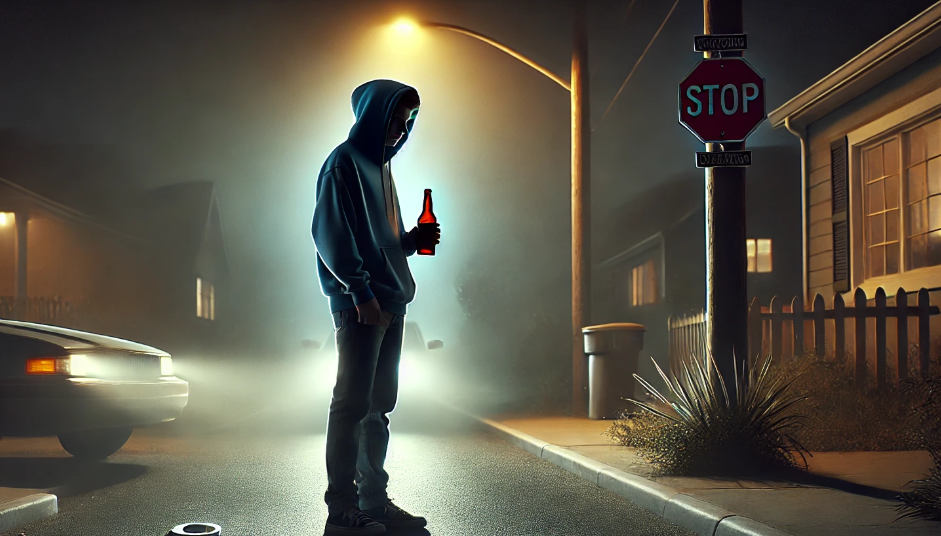Alcohol’s Link to Sexual Assault and Vulnerability
It’s an uncomfortable topic, but one that cannot be ignored: underage drinking dramatically increases the risk of sexual assault and other forms of victimization. Alcohol can make teens more vulnerable – it impairs judgment, reduces the ability to resist or recognize dangerous situations, and sadly, some predators use alcohol as a tool to prey on others. Underage binge drinking is associated with a higher likelihood of being either the victim or the perpetrator of interpersonal violence, including sexual assaultniaaa.nih.gov. In our community and beyond, understanding this link is critical to protecting young people.
How Alcohol Heightens Vulnerability
Alcohol affects the brain’s decision-making and awareness. For someone who’s been drinking, red flags that would normally prompt caution may go unnoticed. A teen at a party who is intoxicated might go off alone with someone they normally wouldn’t trust while sober, or fail to yell for help or fight back during an aggressive situation because their reflexes and judgment are impaired. Moreover, alcohol impairs the ability to give or get clear consent. A person who is very drunk cannot consent to sexual activity – this is a legal and moral line. Yet many cases of sexual assault among teens and college students involve at least one party being under the influence of alcohol.
Studies of college populations have confirmed a sobering statistic: the majority of sexual assaults in college involve alcohol or other substancesniaaa.nih.gov. While we have less specific data for high school, the dynamics are similar in any setting where youth and alcohol mix. The perpetrator might be drinking, the victim might be drinking, or both. Alcohol doesn’t cause someone to commit assault (that responsibility lies solely with the perpetrator), but it lowers inhibitions and can unleash aggressive or predatory behavior in some individuals. It can also render a potential victim less able to protect themselves. In essence, alcohol can be the facilitator that perpetrators exploit.
Parents and teens should also be aware of drink tampering. In some cases, assailants will spike a beverage (adding more alcohol or drugs to it) to incapacitate someone. Teenagers must be cautious at parties – never leave drinks unattended, and if you didn’t open or pour it yourself (or see it poured from a safe source), think twice before drinking it.
The Emotional and Legal Fallout
An alcohol-fueled assault can leave deep emotional scars. Victims often struggle with shame, guilt, or confusion – feelings that can be amplified if they were drinking (“I shouldn’t have had that beer…”). It’s crucial to emphasize: if someone is assaulted, it is not their fault, regardless of alcohol. Blaming a victim for drinking is akin to blaming them for being vulnerable – something we must reject. However, in prevention, we try to reduce any factors that increase risk. That’s why encouraging teens to stay sober, or at least stay in control and look out for each other, is part of a comprehensive approach to reducing sexual violence.
Legally, the consequences are severe for perpetrators – as they should be. But also, teens might not realize that if two minors are drinking and something non-consensual occurs, the situation becomes complex and traumatic for everyone. It’s far better to avoid the murky territory altogether by steering clear of alcohol in situations that could lead to sexual activity. Additionally, being intoxicated won’t protect a perpetrator from legal action – “I was drunk and didn’t know what I was doing” is not a defense. The law (and colleges, and society at large) increasingly recognize that intoxication is involved in too many assault cases, and they are cracking down on those circumstances.
Building a Culture of Safety and Respect
Preventing sexual assault related to alcohol involves both reducing underage drinking and educating about consent and bystander intervention. Teens should know: if you see a friend (or even someone you don’t know well) who’s had too much to drink and is being led away or harassed by someone, step in. Get others to help, create a distraction, or directly say, “Hey, let’s get you home.” Having each other’s backs at parties can literally prevent an assault. This is known as bystander intervention, and it’s proven effective on college campuses and can work at high school gatherings too.
Parents and educators in Salmon can help by talking openly about these issues. It might feel early to discuss sexual assault with a 15-year-old, but these conversations are sadly necessary. Discuss scenarios: “What would you do if you’re at a party and you notice a girl who’s really out of it being steered upstairs by someone?” or “If you ever find yourself drunk and someone is trying to take advantage, know that you can call me anytime for help, no judgment.” Equip teens with strategies, like sticking with friends (“We arrive together, we leave together” pacts) and using code words via text if they feel unsafe.
Call to Action: Community organizations, including SSAPCO, can incorporate sexual assault awareness into underage drinking prevention programming. Perhaps a workshop for teens on both the dangers of alcohol and the importance of consent could be offered. For families, this week might be a good time to share some facts: for instance, that underage drinking not only could get you hurt or in trouble, but it also raises your risk of experiencing violence, including sexual violencecdc.gov. Encourage a dialogue without scare tactics – focus on empowerment and safety. By fostering an environment where teens feel responsible for each other and confident to say “this isn’t right,” we can reduce both underage drinking and the painful outcomes that can follow when alcohol and exploitation intersect. Everyone deserves to feel safe; keeping alcohol out of teen parties is one big step toward that goal.
Sources: NIAAA, CDC, NHTSA (college data), RAINN (conceptual guidance)


Comments
Post a Comment